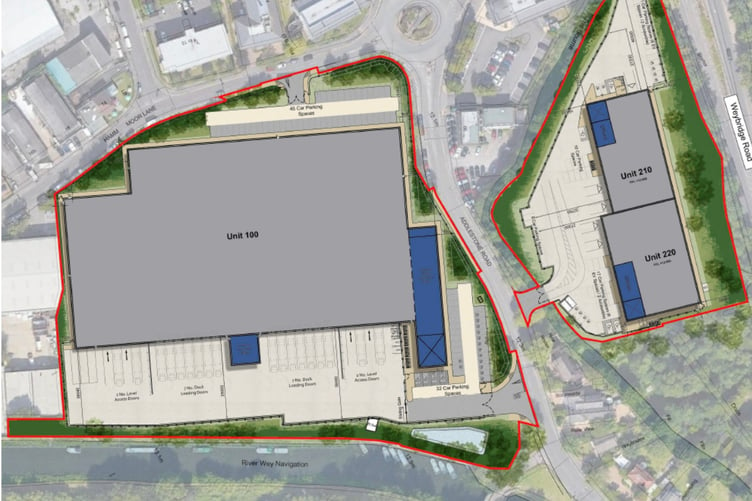A PROPOSAL for almost 20,000 square metres of industrial buildings in Addlestone, which the National Trust had feared would adversely impact the Wey conservation area, has been rejected.
The plan to redevelop vacant buildings in the business park on Addlestone Road had been recommended for approval, as the land was identified in the Runnymede Local Plan as suitable for development, as well as having the potential to create up to 400 jobs.
Residents consulted as part of the process had raised concerns over noise, particularly relating to the 24-hour operations of the proposed development and HGVs using the site. If approved, the development could have paved the way for a round-the-clock Amazon delivery hub on the edge of the Wey Navigation System.
The current offices on the site would have been replaced by a new building, at 14,258sqm, with 14 docks for heavy goods vehicles as well as an additional four HGV parking spaces.
Two further buildings would be built to the north of the site, taking up a combined 3,236 sqm and standing 15 metres tall with five spaces for larger vehicles.
The National Trust had said it feared the building would be visible in views along the Wey Corridor and impact adversely on the appearance of the conservation area.
The Trust was also deeply worried about the potential for noise pollution.
Writing to Runnymede Council’s planning committee, the Trust said: “Of perhaps greater concern is the adverse impact of vehicle noise on the amenities currently enjoyed by boat users on the navigation, passing through and at the moorings, and by pedestrians and cyclists using the towpath.
“Unless additional measures can be incorporated to reduce night-time noise levels it is likely that the occupiers of residential boat moorings on the Wey Navigation would experience disturbance and significant loss of amenity.”
Members of Runnymede’s planning committee discussed the plans for two-and-a-half hours, before rejecting the proposal on the grounds that the warehouses would be overbearing along with the environmental impact, of both noise and pollution, from the constant use.





Comments
This article has no comments yet. Be the first to leave a comment.